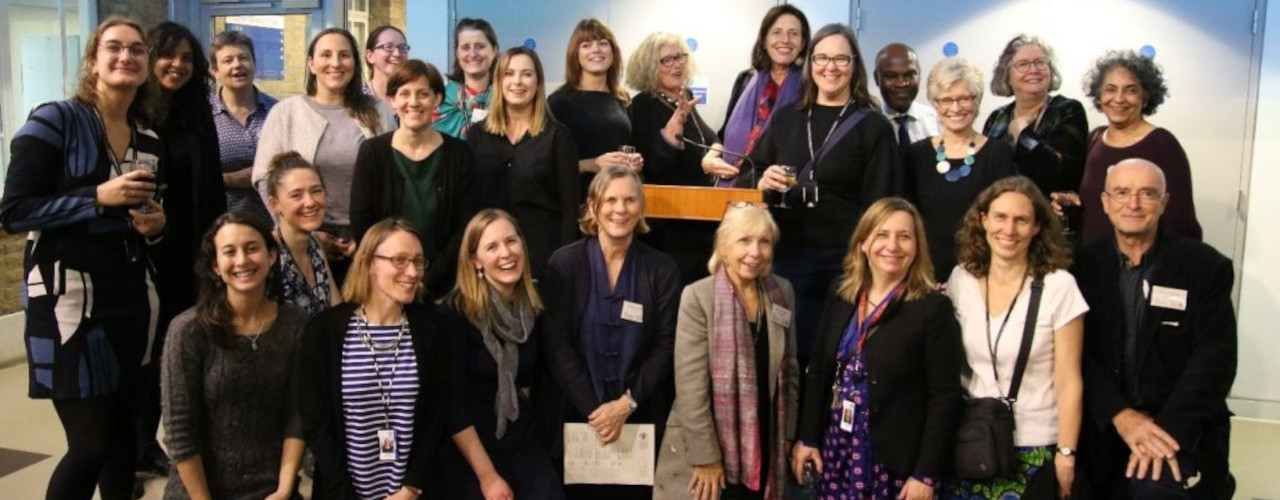Areas of expertise in the Maternal Health Team include the measurement of maternal morbidity and mortality, clinical audits of near-miss cases and maternal deaths, other quality of care improvement approaches, evaluation of complex interventions, definition and measurement of unsafe abortion, signal functions for health facilities, long term consequences of maternal deaths and complications, the relationship between HIV and maternal mortality, and healthcare-associated infections at birth.
The Maternal and Newborn Health Group is a multi-disciplinary research team at the London School of Hygiene and Tropical Medicine within the Department of Infectious Diseases and Epidemiology and Faculty of Epidemiology and Population Health.
The Maternal and Newborn Health Group carries out research to contribute to the international debate and key policy, measurement and evaluation issues related to the health of mothers and newborns, including the prevention of stillbirths.
Improving the health and survival of women and their newborns during and after pregnancy has long been a research priority globally, and one to which LSHTM has contributed to since its inception over a 120 years ago. During this long period, the topics and geography of focus as well as the research methods have shifted and evolved enormously, and the current MNHG in IDE reflects this process – both in its composition and its aspirations for the next decade and beyond. From a small nucleus created in the late 1980s, the Group has expanded well beyond its initial focus on the epidemiology of maternal health, particularly metrics to assess levels, trends and differentials, and there is now also a strong programme of research on newborn health and on stillbirths.
The multidisciplinary research team is made up of epidemiologists, anthropologists, statisticians, economists, demographers, and clinicians such as medical doctors, midwives, and nurses. Research by the Group is conducted with collaborative partners in the UK and overseas who have established reputations in the field. We also publish actively in both peer-review publications and global guidance in partnership with for example the World Health Organization, UNFPA and UNICEF.
Areas of expertise in maternal health include the measurement of maternal morbidity and mortality, clinical audits of near-miss cases and maternal deaths, other quality of care improvement approaches, evaluation of complex interventions, definition and measurement of unsafe abortion, signal functions for health facilities, long term consequences of maternal deaths and complications, the relationship between HIV and maternal mortality, and healthcare-associated infections at birth.
In newborn health expertise focuses on high impact research and partnerships for next generation leadership, notably through the ‘Every Newborn Action Plan’. We work to reduce stillbirths and neonatal deaths, perinatal infections notably Group B Strep, later disability and to promote child development. Specific expertise includes: improving data and routine information systems for impact indicators (LBW, preterm birth, stillbirths, neonatal cause of death, maternal and perinatal death surveillance and response), coverage/quality of care, tools to assess service readiness for maternal/newborn care, as well as measurement for early child development; large observational studies and cohorts; RCTs; large scale evaluation of complex interventions and national progress tracking and case studies.
The current Head of the MNH Group is Professor Wendy J Graham, and the Deputies are Dr Louise T. Day and Dr Enny Cruz.
Focus on High Burden Countries to address SDG Targets 3.1 & 3.2
Current global health efforts focus on the Sustainable Development Goal (SDG) targets, of which the first two for SDG 3 are on reducing maternal and newborn mortality.
- SDG Target 3.1: Reduce the global maternal mortality ratio to less than 70 per 100,000 live births
The high number of maternal deaths in some areas of the world reflects inequalities in access to quality health services and highlights the gap between rich and poor. The MMR in low income countries in 2017 is 462 per 100 000 live births versus 11 per 100 000 live births in high income countries.
- SDG Target 3.2 | Newborn and child mortality: By 2030, end preventable deaths of newborns and children under 5 years of age, with all countries aiming to reduce neonatal mortality and under‑5 mortality
Globally 2.4 million children died in the first month of life in 2019. There are approximately 7 000 newborn deaths every day, amounting to 47% of all child deaths under the age of 5-years, up from 40% in 1990. Sub-Saharan Africa had the highest neonatal mortality rate in 2019 at 27 deaths per 1,000 live births, followed by Central and Southern Asia with 24 deaths per 1,000 live births. A child born in sub-Saharan Africa or in Southern Asia is 10 times more likely to die in the first month than a child born in a high-income country.
MNH Group members lead research and teaching to address where maternal mortality, and newborn mortality stillbirth are highest. Many studies are multi-country and efforts are intentionally global in reach. We partner with fellow academic institutions, multi-lateral and non-governmental organizations across both high income and low-and-middle income countries, with an aim to decolonize global health and engage in two-way learning and capacity building through equal and sensitive engagement.
Collaboration with the MARCH Centre
Many of the MNH Group members also are active members of the LSHTM Maternal, Adolescent, Reproductive and Child Health Centre (MARCH). Centres at LSHTM are cross-faculty, multi-disciplinary, cross-institution networks of academics collaborating and innovating to address global health challenges. MARCH brings together over 400 researchers at the London School of Hygiene & Tropical Medicine to improve the health of women, children & adolescents worldwide. The Centre has a range of expertise across 50 disciplines, from anthropology to zoonoses, clinical care, lab, and social sciences and works around the world in 100 countries, from Afghanistan to Zimbabwe.
